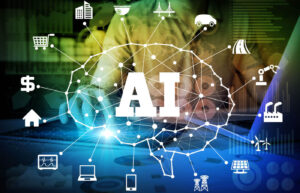Achieving Human-Level AI by 2030: Is It Possible and Are We Prepared?

The Potential for Human-Level AI by 2030
With rapid advancements in artificial intelligence (AI), discussions around the possibility of achieving human-level AI, or general artificial intelligence (AGI), by 2030 have gained significant traction. In this article, we will explore the implications of such advancements, the current state of AI technology, and the societal readiness for this potential leap.
Understanding Human-Level AI
What is Human-Level AI?
Human-level AI refers to systems that can understand, learn, and apply knowledge in a way that resembles human reasoning. Unlike narrow AI, which excels in specific tasks like language translation or game playing, human-level AI would possess a more comprehensive understanding and the ability to perform various tasks across different domains.
Milestones Towards Human-Level AI
There are a few key milestones that researchers and technologists consider crucial in the development of human-level AI:
- Natural Language Processing (NLP): Improving interactions between humans and machines through better understanding of human language.
- Machine Learning (ML): Allowing AI systems to learn from data and adapt over time without explicit programming.
- Cognitive Computing: Creating AI that can simulate human thought processes and decision-making abilities.
- Robotics: Developing machines that can perform physical tasks effectively in real-world scenarios.
Current State of AI Technology
AI technology has seen substantial progress in recent years, evident in various applications:
Natural Language Processing
Tools like OpenAI’s ChatGPT and Google’s BERT have made significant strides in understanding and generating human-like text. These systems can now participate in conversations, compose emails, and even create content, demonstrating a basic level of understanding.
Image and Video Recognition
AI systems have achieved remarkable accuracy in identifying objects and faces within images and videos. This capability is widely used in social media tagging, surveillance, and autonomous vehicles.
Automation and Robotics
Robots are increasingly employed in factories, warehouses, and even homes. Advances in robotics and AI allow these machines to perform intricate tasks, enhancing daily productivity.
Limitations to Overcome
Despite these advancements, achieving human-level AI still faces limitations:
- Common Sense Reasoning: Current AI struggles with understanding complex human contexts and applying common sense logic.
- Emotional Intelligence: AI lacks the ability to genuinely understand human emotions, which are crucial for effective interaction.
- Generalization: Unlike humans, AI systems often have difficulty transferring knowledge learned in one context to another.
Addressing Readiness for Human-Level AI
As we consider the prospect of human-level AI by 2030, we must reflect on the societal implications and readiness for such technology.
Ethical Considerations
- Bias in AI: Algorithms can perpetuate existing biases found in training data, leading to unfair outcomes.
- Job Displacement: Increased automation could lead to significant job losses in various sectors, raising concerns about the future of employment.
- Data Privacy: Widespread AI adoption raises questions about data handling and privacy for individuals.
Preparing Society
- Education and Training: To adapt to an AI-driven future, educational systems need to emphasize digital literacy and critical thinking.
- Regulation and Oversight: Governments and organizations must create robust policies to regulate AI development and ensure ethical practices.
- Public Awareness: Increasing awareness about AI and its implications can help society understand and navigate the changes ahead.
Future Outlook
The journey towards human-level AI by 2030 is filled with both opportunities and challenges. Technological advancements are promising, and with proper focus on ethical considerations and societal readiness, we can harness AI’s potential for the benefit of all. As we delve deeper into AI technology, the discussions surrounding its implications will likely continue to evolve, keeping researchers, policymakers, and the public engaged in the dialogue.






